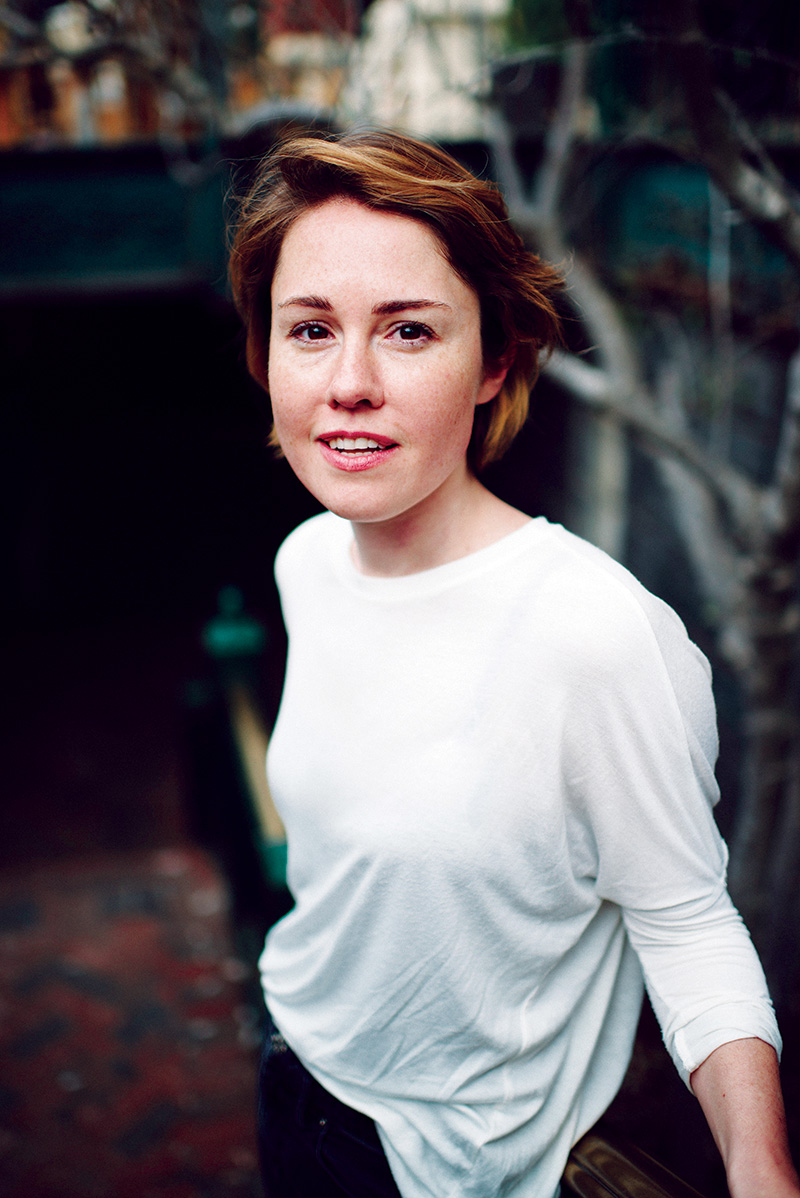Caroline Shaw
The Observatory
Caroline Shaw

- Born: August 1, 1982, Greenville, North Carolina
©Kait Moreno
The Observatory
- Composed: 2019, commissioned by the Cincinnati Symphony Orchestra (made possible by a generous gift from Melinda and Irwin Simon) and the Los Angeles Philharmonic Association
- Premiere: August 27, 2019, Los Angeles Philharmonic at the Hollywood Bowl, Xian Zhang conducting
- Instrumentation: 2 flutes, piccolo, 2 oboes, 2 clarinets, bass clarinet, 2 bassoons, contrabassoon, 4 horns, 2 trumpets, 3 trombones, tuba, timpani, bass drum, glockenspiel, snare drum, vibraphone, piano, strings
- CSO notable performances: These performances are the work’s CSO premiere.
- Duration: approx. 15 minutes
Creating a score for full orchestra can feel like simultaneously standing on a mountaintop, scrubbing your kitchen floor, swimming in the middle of a lake, riding the subway during rush hour, and gently holding someone’s hand. It’s not a medium that I work in very often. I always try to write for the particular environment (place, ensemble or person, time of year, etc.) in which the music will first be heard (in this case: the Hollywood Bowl, the LA Phil, the brilliant Xian Zhang, the heat of August 2019). It’s a fun constraint, and it helps keep the writing personal and connected to the real world. The first and only time I’ve ever been to the Hollywood Bowl was in September 2015, singing with Kanye at the 808s and Heartbreak show. It was a wild ride, and I remember feeling like an observer of a mysterious workshop that somehow churned beauty out of chaos. There is also something about writing an orchestral work for a summer evening in Hollywood that got me thinking about my favorite genre of film and storytelling—sci-fi. I love the way epic tales of the beyond can zoom in and out, using grand imagined alternate universes to tell stories about ourselves. And I love how music in these films carves and colors our attention to those worlds (in their various scales).
While writing music, I often imagine some kind of visual (usually abstract, sometimes figural, rarely narrative) as a guide for myself and sometimes as a thing to write against. There’s an invisible counterpoint here, but I’d rather someone simply listen and create their own contrapuntal narrative adventure than read an account of mine—to leave space for one’s own observation and reflection, whether it be of the music or their neighbor’s T-shirt or cosmology or tomorrow’s grocery list. (The grand story arcs of our lives sometimes play out in minutiae and the mundane.) And often the imagined visuals that I write to are nothing more than shifts in color or a quick cut between undefined scenes. (Sometimes the juxtapositions and transitions [and parentheticals] are where the stories are.)
I was in the midst of writing The Observatory while in LA earlier this spring to record some vocals (hi, Teddy Shapiro!). So one morning before our session I went up to the Griffith Observatory to clear my head. I looked down at the city with all its curves and all its edges (thanks, John Legend), and up at the sky, which has been observed and wondered about since the beginning of consciousness. I had been thinking about my friend Kendrick Smith, a cosmologist at the Perimeter Institute (and also my favorite grill master). Kendrick is at the cutting edge of the ancient tradition of stargazing, constructing new frameworks for analyzing data collected by the CHIME radio telescope. My simplistic distillation of his work: Kendrick develops ways of looking at ways of looking at ways of looking at nn(ways of looking at) the universe. Sometimes I think maybe that’s what music is. Or maybe it’s just a way to acknowledge and pass the time.
If you’ve gotten this far in the program note, you’re probably wondering if I’ll actually talk about the music you will hear in The Observatory. Okay. There are some very large chords, and some very large spaces. There are patterns and details of movements of patterns (thanks, T.S.). There are motives that appear in diminution and augmentation simultaneously, like objects in orbit at different phases. There is foreground and background. There is love for Andrew Norman. There are references to Strauss’ Don Juan, Bach’s Brandenburg Concerto No. 3, Sibelius’ Symphony No. 2, Brahms’ Symphony No. 1, and the arpeggiated chimes used to summon audiences to their seats at orchestra concerts. There is celebration and criticism of systems. There is chaos and clarity. The very large chords return at the end, but their behavior is not the same as when we began. Welcome to The Observatory.
—Caroline Shaw, 2019